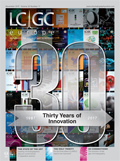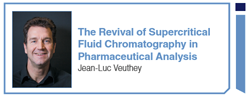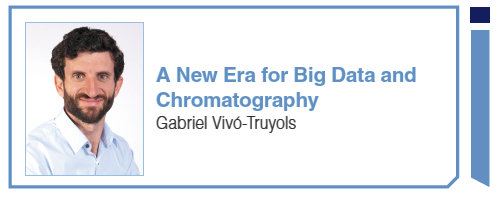15th International Symposium on Hyphenated Techniques in Chromatography and Separation Technology (HTC-15)
The 15th International Symposium on Hyphenated Techniques in Chromatography and Separation Technology (HTC-15) will be held at Cardiff City Hall, Cardiff, United Kingdom, from 24–26 January 2018.
Photo Credit: Billy Stock/Shutterstock.com

The 15th International Symposium on Hyphenated Techniques in Chromatography and Separation Technology (HTC-15) will be held at Cardiff City Hall, Cardiff, United Kingdom, from 24–26 January 2018. This is the second time the Hyphenated Techniques in Chromatography (HTC) conference has been held in the UK and the event is set to be a premier UK event for separation scientists in 2018, attracting national and internationally renowned scientists, with delegates from 15 different countries registered so far. The meeting is organized by the Royal Society of Chemistry Separation Science Group (RSC SSG) with the Royal Flemish Chemical Society (KVCV). Full meeting details can be found at www.htc-conference.co.uk.
The programme will include topics such as Big Data, Fundamentals and Exploiting Separation Science, (R)evolutions in Biopharmaceutical Analysis, Food and Drink, Environmental, Comprehensive Chromatography, and much more. The conference will include five plenary lectures, 16 keynote lectures, eight tutorial lectures, 48 oral presentations, and 24 early career researcher (ECR) presentations, as well as daily poster sessions.
The plenary lectures will be given by Rob Beynon (University of Liverpool, UK), Tuulia Hyötyläinen (Örebro University, Sweden), Eric Little (Othus Inc), Peter Schoenmakers (University of Amsterdam, The Netherlands), and the recently announced Knox Medal winner, Peter Myers (University of Liverpool, UK). An up-to-date speaker list can be viewed at www.htc-conference.co.uk. The oral programme is complete, with over 40% of presentations from abstract submissions. The full programme will be posted online in early November and includes a dedicated ECR programme as one of the three parallel sessions.
Conference registration is open at www.ilmexhibitions.com/htc/registration and poster registration will remain open until 30 November 2017, so please submit your abstracts now at www.ilmexhibitions.com/htc/abstract-submission.
Alongside the core scientific programme, the symposium is hosting an attractive technical exhibition where leading companies active in the field will present their latest developments in instrumentation, software, and applications related to the hyphenation of separation, detection, and sample preparation techniques topped with technical seminars. Nineteen companies have already signed up so if your company is interested in exhibiting at HTC-15 please follow www.ilmexhibitions.com/htc/floorplan-booking to secure a place.
Cardiff is the closest capital city to London and Cardiff Airport is only a 20 minute journey, easily accessible by car or shuttle. Bristol International Airport is also only one hour away with fights from 112 different countries. Delegates travelling via London should remember to book your onwards journey to the event in advance. The organizers have secured an exclusive deal with Great Western Railway (GWR). This offers reduced rates for delegates travelling at any time to Cardiff Central Station from all main GWR stations, including London Paddington, as well as many connecting routes to Great Western Railway from the Home Counties. For more details visit www.ilmexhibitions.com/htc/location-direction.
The conference will be preceded by two short courses on 23 January 2018, Supercritical Fluid Chromatography: From Theory to (Industrial) Application, www.ilmexhibitions.com/htc/sfc-shortcourse and Introduction to Biopharmaceutical Analysis, www.ilmexhibitions.com/htc/biopharma-shortcourse.
The organizing committee look forward to welcoming you to HTC-15 in the historic city of Cardiff and to City Hall.

Regulatory Deadlines and Supply Chain Challenges Take Center Stage in Nitrosamine Discussion
April 10th 2025During an LCGC International peer exchange, Aloka Srinivasan, Mayank Bhanti, and Amber Burch discussed the regulatory deadlines and supply chain challenges that come with nitrosamine analysis.


















